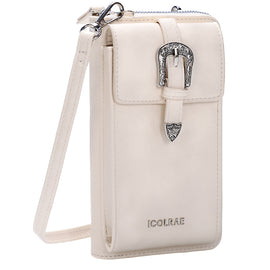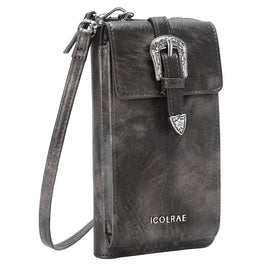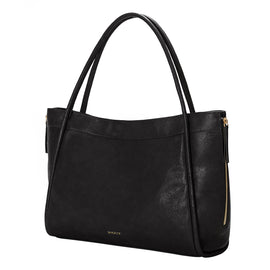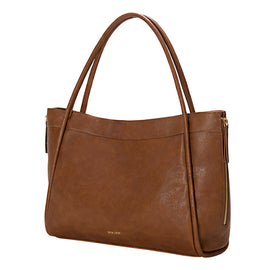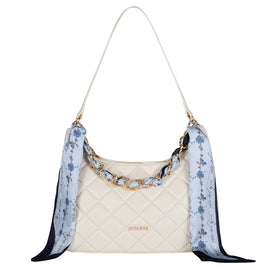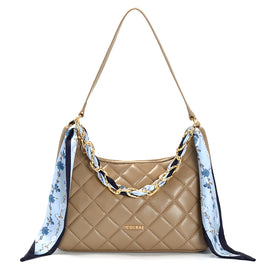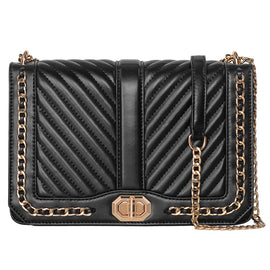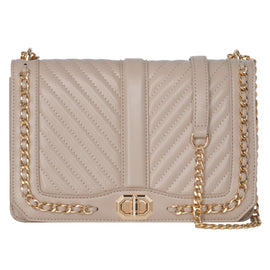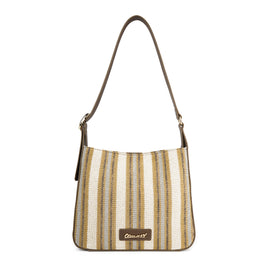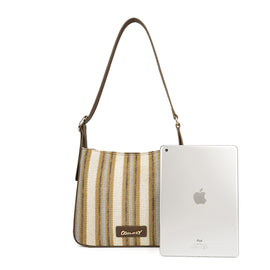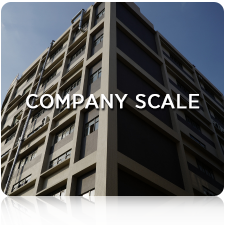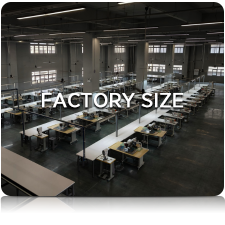Startup Guide: How to Profit from Custom Handbags
Custom handbags are one of the most attractive product categories for startups: they carry strong branding potential, high perceived value, and clear opportunities for margin if you control design, production, and distribution. But turning a concept into a profitable product requires strategy — from design and costing to manufacturing and go-to-market execution.
This guide walks founders and product managers through the essential steps to build a profitable custom-handbag business and explains why choosing a reliable OEM partner is one of the single most important decisions you'll make.
1. Why custom handbags can be profitable
-
High perceived value. A well-designed bag tells a story and commands a premium price relative to basic apparel or accessories.
-
Differentiation & brand loyalty. Materials, hardware, and finishing details create repeatable brand cues (the “signature” touch that customers pay for).
-
Multiple revenue channels. Sell DTC (direct-to-consumer), wholesale, subscriptions, limited editions, and collaborations.
-
Scalable unit economics. Once tooling and supply-chain workflows are established, unit costs drop substantially with volume.
That said, profitability is not automatic. It depends on disciplined cost control, smart pricing, strong branding, and reliable manufacturing.
2. How to structure a profitable product play (step-by-step)
A. Validate demand before production
-
Run small-batch pre-orders, Kickstarter campaigns, or limited pop-ups.
-
Use landing pages and social ads to measure conversion and CAC (customer acquisition cost) before large-scale investment.
B. Nail the design / value differentiator
-
Focus on one or two features that justify a premium: unique hardware, superior lining, innovative closures, or signature material.
-
Prioritize manufacturability—design for production (DFP) reduces costly revisions.
C. Build accurate cost-of-goods (COGS)
Include:
-
Materials (outer, lining, interfacings)
-
Hardware (zippers, buckles, rivets)
-
Labor per unit
-
Packaging, dust bags, hangtags
-
Logistics and duties
Sample pricing math (clear, step-by-step):
-
Suppose your total COGS per bag = $30.
-
Target gross margin = 60% (a common target for fashion items).
-
Retail price = COGS ÷ (1 − margin) = $30 ÷ (1 − 0.60) = $30 ÷ 0.40 = $75.
This means to achieve 60% gross margin at retail, you’d price the bag at $75. Adjust for channel (retail vs wholesale) and distribution costs.
D. Choose a pricing & channel strategy
-
Direct-to-consumer (DTC): highest margin but requires marketing investment.
-
Wholesale / retail partners: lower margin per unit but higher volume and brand reach. Common wholesale markup to retail is 2×–2.5× the wholesale price.
-
Limited editions or collaborations: justify higher pricing and faster sell-through.
E. Control margins via production decisions
-
Optimize materials for cost vs perceived value (e.g., premium PU leather for lower COGS; cowhide for luxury).
-
Negotiate MOQs, tooling amortization, and batch frequency.
-
Use tiered pricing with production volume forecasts to reduce unit cost as you scale.
3. Minimum viable production & launch plan
-
Prototype phase: 1–3 samples to validate fit, function, and aesthetics. Expect 1–3 weeks per sample iteration.
-
Pilot run: Small batch (e.g., 100–500 units) to validate processes and market reception.
-
Full production: Scale once KPIs (sell-through, returns, reviews) meet targets.
Keep early runs small to limit inventory risk. Use pre-orders to fund tooling and reduce cash outlay.
4. Vetting and selecting a reliable custom handbag supplier
Choosing the right manufacturer protects margins, shortens lead times, and preserves brand quality. Use this checklist when evaluating suppliers:
Supplier vetting checklist
-
Experience & specialization: Do they make handbags (not just generic bags)? Ask for relevant references.
-
Sample & prototyping speed: How many days to first sample? How many revision rounds included?
-
Minimum order quantity (MOQ): Can they accommodate small pilot runs?
-
Manufacturing capacity & lead time: Typical production lead times and max monthly output.
-
Quality control (QC): Describe QC steps, tests for seams, hardware, color fastness.
-
Materials sourcing: Can they source leathers, linings, and sustainable alternatives with certificates?
-
Transparency & compliance: Factory audits, labor standards, chemical compliance (e.g., REACH, CPSIA).
-
IP & tooling protection: Who owns molds/dies and how are designs protected?
-
Communication & language: Dedicated project manager? Clear progress reports?
-
Cost transparency: Detailed unit cost breakdowns and variable vs fixed costs.
-
Logistics & packaging: In-house packing, dust bags, hangtags, export documentation.
-
References & past clients: Request contactable brand references and case studies.
5. How a partner like HerminFashion helps startups stay profitable
HerminFashion supports startups across the product lifecycle to improve margins and product-market fit:
-
Design for manufacture: early-stage consulting to keep designs manufacturable and cost-efficient.
-
Rapid prototyping: iterative samplings and lab-dips to speed approval.
-
Low-MOQ options: pilot runs that reduce upfront risk for new brands.
-
Material sourcing: access to leather, premium PU, recycled textiles, hardware, and sustainable options at competitive rates.
-
Transparent costing: line-item COGS to support accurate pricing models.
-
Quality systems: in-house QC, pre-shipment inspection, and testing.
-
Packaging & fulfillment support: dust bags, swing tags, and logistics coordination to speed time-to-market.
-
Scalability: capacity to scale production as your orders grow, with predictable lead times.
HerminFashion’s combination of supply-chain access, technical know-how, and brand-centered service helps startups preserve margin while delivering products customers love.
6. Common pitfalls and how to avoid them
-
Overdesigning: too many custom parts inflate costs and cause manufacturing delays. Design lean.
-
Ignoring COGS early: price your product around real manufacturing numbers, not aspirational price points.
-
Skipping quality checks: avoid costly returns and brand damage by enforcing QC from the first pilot run.
-
Underestimating logistics: factor duties, shipping, and warehousing into landed cost.
-
Poor supplier fit: a manufacturer who lacks handbag experience will cost you more in rework and time.
7. Quick startup checklist (actionable)
-
Validate demand with pre-orders or sample drops.
-
Finalize one strong product feature that differentiates you.
-
Build a full COGS model and run pricing scenarios.
-
Select a manufacturer with low-MOQ pilot options and strong QC.
-
Test a pilot production batch and measure sell-through.
-
Iterate on feedback, then scale with volume discounts.
-
Protect IP, document processes, and plan logistics ahead.
Conclusion
Custom handbags remain a profitable category for startups who combine thoughtful design, clear costing, smart pricing, and the right manufacturing partner. The difference between a money-losing passion project and a scalable venture often comes down to manufacturing choices and how well you control unit economics.
If you’re launching a handbag brand, working with a partner who understands both design and production — one that offers prototyping, flexible MOQs, transparent cost breakdowns, and reliable QC — is critical. HerminFashion provides those capabilities, helping startups move from concept to profitable production.

